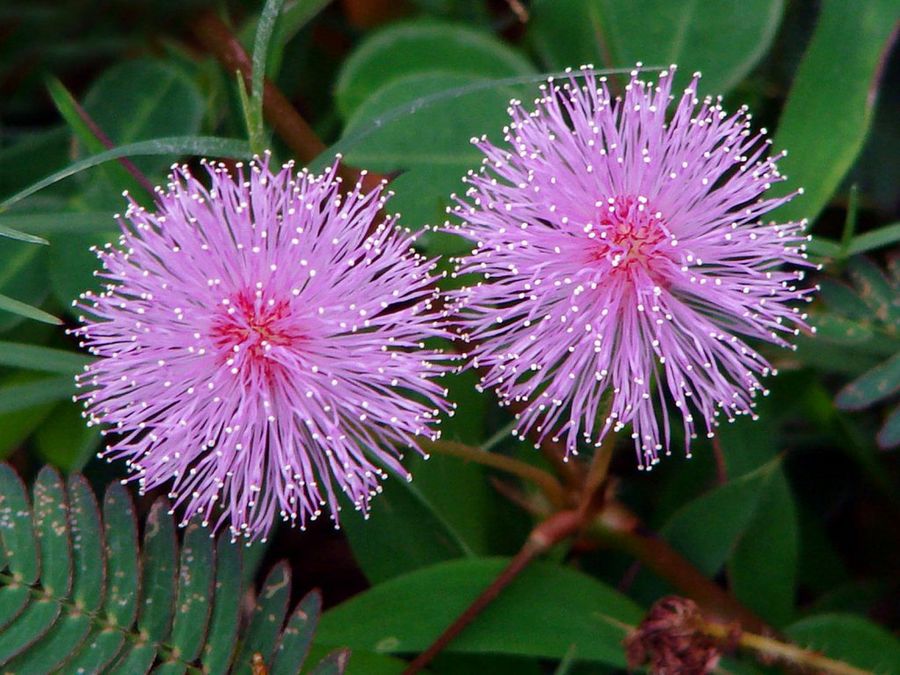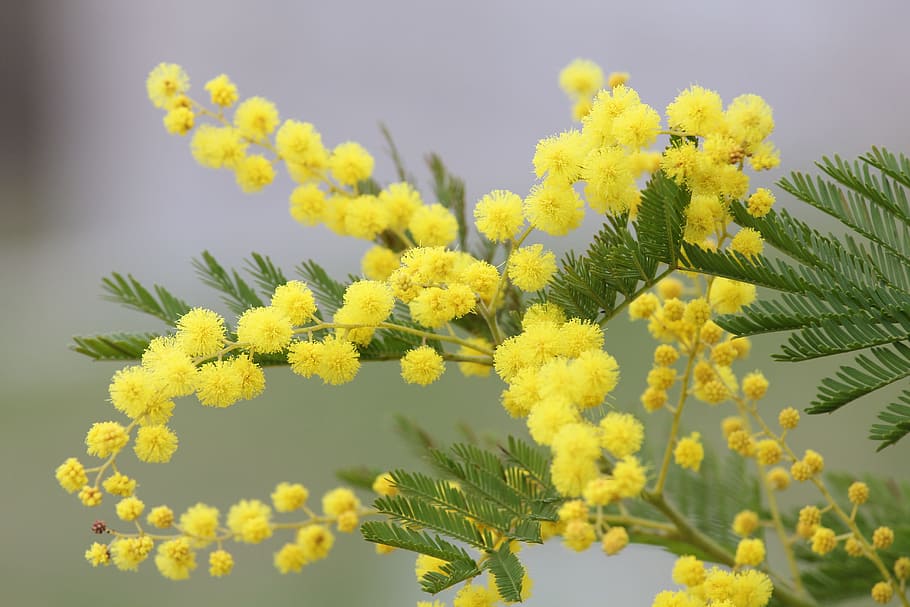The Mimosa Plant, also known as Sensitive, arouses a lot of curiosity, as it has the ability to fold as a defense method, popularly called sleepy or shameful. It has tiny but showy little flowers. We invite you to know and discover everything about this wonderful and interesting plant.

mimosa plant
The Mimosa Plant is known by many names that conform to its main characteristic, which is to fold to protect itself from predators and at the same time to avoid losing water. This herb is known by the popular names Mimosa sensitive, shameful, moriviví, opium poppy, plant of shame and sleepyhead. This can be planted indoors, but there comes a time when it is advisable to move it to the garden. It is given ornamental and experimental use due to the sensitivity and reaction of its leaves. It is also considered a weed, which can affect certain crops.
Origin and Characteristics
The Mimosa Plant is native to South America and Africa, so it adapts well to tropical areas. Its scientific name is Mimosa pudica, of the Mimosaceae family, its foliage is perennial and in cold climates it is annual. It can reach a meter in height. As for its leaves, they are of the type composed of two pairs of pinnae containing 15 to 20 folios that resemble a fern, they are linear and oblong, which can measure approximately 1 centimeter, with a dark green hue.
As for its flowers, they come in light shades, with pink being the most common, white and mauve. This plant blooms during the summer, the flowers are tiny, barely measuring 1,5 centimeters, they are spherical in shape and the stamens have the same number of lobes as the corolla, its inflorescence is grouped, they are globose for which it is called a head. in the form of clusters. Its roots are large, so it needs enough space for them to develop well. Its fruit is a small legume that appears throughout the year. Its value is primarily ornamental.
Why is the Mimosa Plant so innovative?
This plant has the property of being able to close its leaves as soon as it feels any type of friction, which powerfully attracts the attention of many. The plant folds up in a matter of seconds, giving the appearance of being withered and unattractive to predators, and gradually returns to its natural state. This novel survival mechanism is unique in the plant kingdom. This action is carried out voluntarily at night due to the lack of light. This mechanism is known by the name of nictinastia, which is a reversible response to a stimulus, also classified as sleep movement.
Care required by the Mimosa Plant
This curious plant requires certain care when it is indoors, as it even becomes a game for many. The activation of this mechanism has an energetic cost that can lead it to wither due to exhaustion. It is important to note that as this plant approaches adulthood, it develops spines on the stems that can become dangerous. In order for this plant to develop and maintain itself in good shape, complying with its mechanism without reaching wear and tear, we give you the following advice.
Location
The Mimosa Plant can be grown both in pots and in gardens, the latter being the most recommended. Regardless of where it is located, the ideal is for it to receive a generous amount of direct light for at least 4 hours a day, otherwise it should be in semi-shade.
Earth
This plant is very resistant and adaptable, so it does not require greater demands in terms of substrate. In case of planting it in a pot, it is suggested to use universal fertilizer. In case of planting it in the garden, it is ideal that it be a limestone soil with good drainage.
Irrigation
The Mimosa Plant requires good humidity, but not waterlogging. Ideally, in the summer season, when the days are usually hotter, it is advisable to water approximately every two days, always verifying that the soil is almost dry. The rest of the year, when the temperature is a little lower, it can be watered at intervals of 3 or 4 days. The Mimosa needs enough water to get an idea, if it is in a pot you should see that the water comes out through the drains and if it is in the garden you should use approximately 3 liters of water depending on the size of the plant.

Subscriber
Even when the Mimosa Plant does not require greater care in terms of fertilization, it is recommended to do it at least once a year so that the plant can develop and maintain itself in optimal conditions. This fertilizer can be made with guano, which is the result of the accumulation of bat, seabird and seal droppings, which is highly effective for this plant.
Rusticity
The Mimosa Plant adapts very well to tropical climates, so frosts, that is, temperatures below 13° C, are not welcome. Therefore, it requires moderate exposure to the sun. It is not tolerant to strong winds. If it is grown indoors, exposure to tobacco smoke should be avoided.
Mimosa Multiplication
The Mimosa is a plant that reproduces by seed. To carry out this procedure, we suggest you follow the following steps: soak the seeds for 24 hours or until they look a little bulging, then place up to 3 seeds in small seedbeds with enough universal substrate, always ensuring that they are not exposed. Proceed to water, it is important that during germination you are very aware of the humidity of the earth. Locate the seedlings in semi-shade. In approximately 10 days you will be able to observe the first shoots. It can also be multiplied by cutting, that is, by taking a young part of the stem that contains at least two leaf buds.
Planting or Transplanting Time
The Mimosa should be transplanted during the spring period, when the shoots have reached at least 10 cm in height. Now, you should change the pot when its roots have occupied all the space and begin to come out through the drainage holes or when you notice that the plant has already occupied all the space and requires more to be able to develop. Keep in mind that the roots of this plant are very large. If it is planted in the garden, it is suggested to plant it near a wall or support so that it works as a climber.
We present this video so you can visualize the characteristics and care of the Mimosa Plant.
Curiosities about the Mimosa Plant
Did you know that in some parts of Venezuela they touch this plant saying "go to sleep, the devil is coming", unfortunately without knowing the damage that is done to it, it is a juice for many children. This plant is very sensitive to tobacco smoke, so it is not an option for smoking environments. The month of February are the days of flowering of the Mimosa.
For many this plant means sensitivity and delicacy. Mimosa contains a toxic alkaloid called mimosine, but its levels are very low making it harmless in small amounts. This species has certain medicinal benefits due to the alkaloid it contains, many use it to relieve animal bites.
If you liked our article and want to learn much more about plants, follow these links: